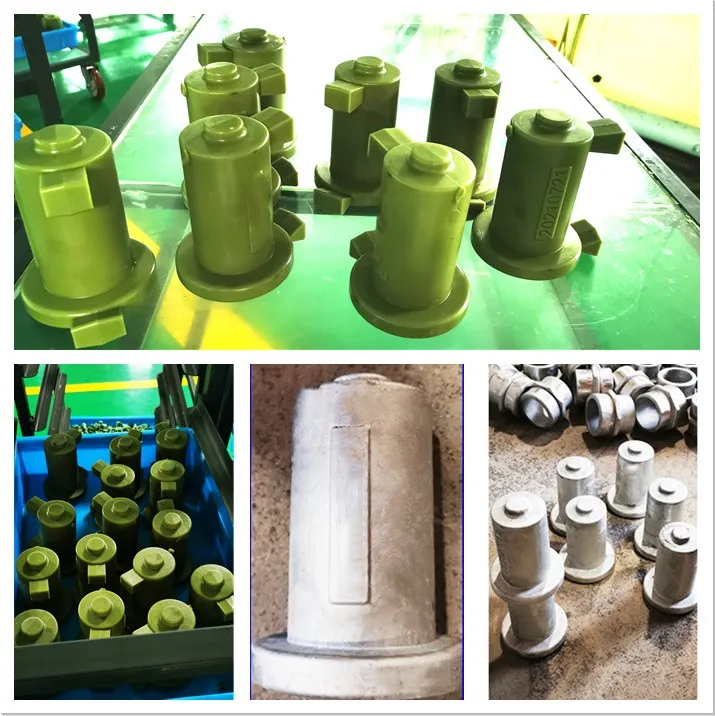Mobile:+86-311-808-126-83
Email:info@ydcastings.com
Choosing the Right 6 Inch Pipe Cap for Your Plumbing Needs
Understanding the Importance of a 6-Inch Pipe Cap
In industrial and construction sectors, the proper management of fluid flow is essential. One of the critical components used in piping systems is the pipe cap. Specifically, a 6-inch pipe cap plays a significant role in various applications, including water supply lines, sewage systems, and oil and gas pipelines. This article will explore the importance of a 6-inch pipe cap, its applications, material considerations, installation, and maintenance.
What is a Pipe Cap?
A pipe cap is a fitting that covers the end of a pipe. It serves several functions, including sealing the pipe to prevent leaks, protecting the interior from debris and contaminants, and allowing for the future expansion of the system. While pipe caps come in various sizes, a 6-inch pipe cap is one of the more common sizes used across different industries.
Applications of 6-Inch Pipe Caps
The versatility of a 6-inch pipe cap makes it suitable for various applications. In plumbing, it is often used to close off water supply lines that are no longer in use. This allows for a safe and efficient way to handle existing piping infrastructure without needing to replace entire systems.
In sewage and drainage systems, 6-inch caps are crucial for maintaining system integrity. They prevent the ingress of unwanted materials and help manage pressure within the pipeline assembly. In manufacturing and processing facilities, these caps can seal off pipes leading to machinery, ensuring that the system operates smoothly without the risk of contamination or leaks.
In the oil and gas industry, 6-inch pipe caps can be employed to secure pipelines during maintenance or when decommissioning sections of a pipeline. They contribute to the safety and environmental protection measures necessary in this highly regulated industry.
Material Considerations
The materials used for 6-inch pipe caps vary depending on their intended application. Common materials include PVC, CPVC, steel, and cast iron.
6 inch pipe cap

- PVC (Polyvinyl Chloride) Often used for water supply and irrigation systems due to its corrosion resistance and lightweight nature.
- CPVC (Chlorinated Polyvinyl Chloride) Suitable for higher temperature applications, CPVC is commonly used in hot water piping systems.
- Steel For more robust applications, particularly in industrial settings, steel caps are favored for their strength and durability.
- Cast Iron Often utilized in sewage systems, cast iron provides excellent durability and can withstand heavy loads.
Choosing the right material is vital, as it affects the cap's durability, resistance to pressure, and ability to handle various environmental conditions.
Installation and Maintenance
Installing a 6-inch pipe cap can be straightforward. Depending on the piping system, it may involve simple threading or welding. It is essential to follow the manufacturer's guidelines to ensure a secure fit, preventing leaks and potential failures in the system.
Regular maintenance is also crucial. Inspecting the caps for signs of wear, corrosion, or leakage should be part of any ongoing inspection regimen. In case of damage, prompt replacement is necessary to maintain system integrity and safety.
Conclusion
In conclusion, a 6-inch pipe cap is a fundamental component in various piping systems across multiple industries. Its role in sealing pipes, preventing contamination, and ensuring efficient fluid flow cannot be overstated. By understanding its applications, material choices, and the importance of installation and maintenance, professionals in the field can better manage their piping systems, safeguarding their operations and the environment. Whether in plumbing, sewage management, or oil and gas, the significance of a simple cap extends far beyond its size.
-
Understanding Metal Casting TechniquesNewsApr.02,2025
-
Understanding Exhaust Manifolds for Enhanced Engine PerformanceNewsApr.02,2025
-
The World of Metal FabricationNewsApr.02,2025
-
Key Components for Pump and Turbo EfficiencyNewsApr.02,2025
-
Essential Tools for Automotive Maintenance and RepairNewsApr.02,2025
-
Durable Valve Components for Effective Water ManagementNewsApr.02,2025











